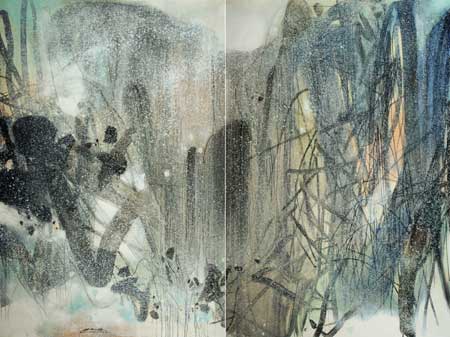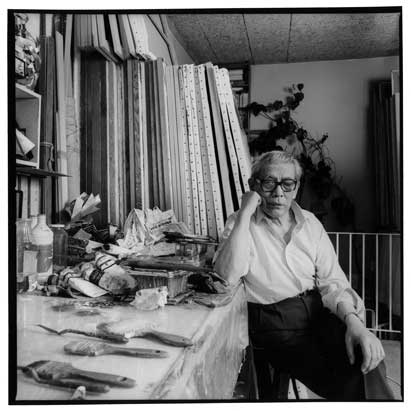A retrospective of Chu Teh-chun's works

A retrospective of one of China's most recognized artists has opened at the National Art Museum of China, offering a rare insight into Chu Teh-chun's lifelong artistic achievements.
"It is quite a hard task to gather so many of Chu's works together, as most of them are now in the hands of collectors or in art museums' collections from around the world," said Chu's wife Dong Jiangzhao, speaking Thursday at the exhibition's opening ceremony in Beijing.
Along with Zao Wou-Ki and Wu Guanzhong, Chu is one of the most sought-after contemporary Chinese masters in the international art market, with some of his abstract works fetching millions of dollars.
"Chu Teh-chun is undoubtedly one of the most important Chinese artists who made huge contributions in filling the gap between Western and traditional Chinese art," commented Fan Di'an, director of the museum.
Chu was the first Chinese artist to be admitted into the prestigious Académie des Beaux Art (Academy of Fine Arts in France) and the 90-year-old master has been recognized worldwide for his tremendous achievements in Western-style abstracts with a unique rendering of Chinese aesthetics.
The exhibition in Beijing features an unprecedented gathering of more than 100 of Chu's works, among which many had never been publicly exhibited before.
Although there have been several exhibitions on the Chinese mainland and in Taiwan before, the current exhibition is the first comprehensive retrospective of Chu to be held in China, according to Jean-Paul Desroches, curator of the exhibition and French national heritage.
 |
|
Chu Teh-chun |
Running through until the end of the month, the exhibition covers both Chu's early works and recently-created pieces, encompassing a wide range of his representative oil paintings as well as ink-washes, calligraphy, ceramics and sketches.
One of the highlights of is a triptych titled Green Dynamism, a representative piece from 1982. With a strong influence from Chinese calligraphy and poems, the abstract is rendered with great musical harmony and rhythm, reflecting the artist's deep feelings toward the mystical natural landscapes.
Like all of his abstracts, with flowing lines and bold color schemes, this piece sends forth a sense of vivid visual perception inspiring boundless imagination.
The work, along with ten of Chu's ink-washes, was donated to the National Art Museum of China, to reflect the artist's affections to his motherland, according to Fan.
Alongside an array of abstract works that earned Chu his international reputation, sharing the limelight at the exhibition are a series of pieces reflecting his achievements in traditional Chinese art such as ceramics and calligraphy.
"With his profound understanding of traditional Chinese art and culture, Chu adds new fresh connotations to his abstract paintings," Fan explained. "It is a brilliant initiative across the cultural boundaries between the West and China."
Chu himself has previously gone on record as saying that although he was greatly influenced by Western masters like Nicolas de Stael and Rembrandt, traditional Chinese culture plays a very important role in his artistic creation.
Born in 1920, Zhu was trained both in Chinese painting and oil painting at Hangzhou National College of Art in the 1930s, when the president of the college, renowned art master and educator Lin Fengmian, encouraged his students to break the boundaries between traditional Chinese and Western art.
In 1955 Chu went to France, where he lived for 50 years and completed his transformation from a figurative artist to abstract painter. He was given the name of "an abstract master from the Orient" by the French art world. Recovering from a stroke that he suffered last year, Chu was unable to attend the opening of his retrospective.
 0
0 







Go to Forum >>0 Comments